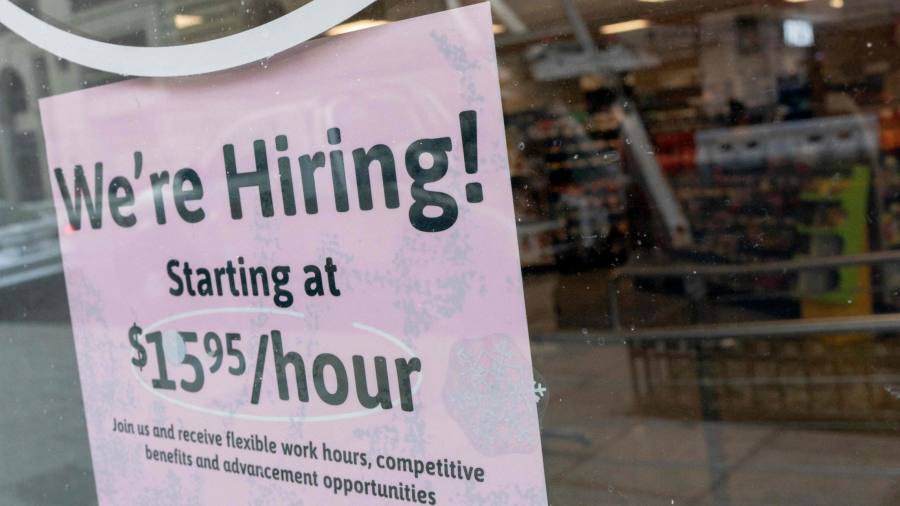© Reuters. What Small-Cap Stocks Are Institutions And Hedge Funds Buying
Quiver Quantitative – Intro:
In our ongoing series of exploring the insights derived from 13F filings, we’ve often focused on the individual investment moves of renowned money managers. This time, however, we’ve shifted our lens to a broader perspective. Our aim is to uncover the aggregated investment patterns in specific companies, offering a bird’s-eye view of institutional and hedge fund trends. In this edition, we delve into three distinct yet equally intriguing large-cap companies: Applovin Corp, ONEOK Inc (NYSE:), and Super Micro Computer (NASDAQ:) Inc. We’ve defined large cap companies as those with a market capitalization larger than $10 billion. By analyzing the institutional/hedge fund holders and market performance of these firms, we hope to provide a clearer picture of their standing in the current financial landscape.
For clarity, we counted the number of funds holding each ticker in the 13F universe for both Q2 and Q3 of this year. For example, in Q2, 4,416 unique filers recorded positions of one or more shares in Apple, Inc (NASDAQ:). In Q3 that number fell by 121 to 4,295 or by about -2.74%. In other words we would not consider AAPL stock for this article considering in this case institutional interest actually fell. You can also think of the numerical change, like -121 in the case of AAPL, as the total number of new positions each quarter minus the total number of positions closed out throughout the quarter. As you’ll see in the writing below however, a number of mid-cap stocks saw significant double digit percentage growth in institutional interest.
TeraWulf Inc (WULF):
Q2 Institutional Holders: 69
Q3 Institutional Holders: 92
Percentage Growth: 33.3%
YTD Return: 198%
TeraWulf Inc. is a company that has carved a niche for itself in the growing industry of mining. Demonstrating a consistent growth trajectory, TeraWulf has recently reported a notable increase in its Bitcoin mining capacity, with a month-over-month rise of 3%, culminating in the mining of 323 Bitcoin in November. This increase is reflective of the company’s strategic advancements and technological enhancements in mining operations they have made over the last year or so. Financially, TeraWulf has seen a remarkable surge in its revenue, escalating from $15 million in 2022 to a striking figure of nearly $70 million in the current year. This financial upswing is mirrored in the company’s stock performance, with shares skyrocketing by 196% year-to-date. Despite these impressive figures, the company’s earnings narrative presents a contrasting picture. TeraWulf has experienced some challenges, evidenced by five consecutive misses on quarterly earnings per share (EPS) estimates, indicating areas where the company might need to refocus its strategies. This would likely include profitability which has also proven to be an issue considering they have not posted positive quarterly net income in at least two years and their current net income for the TTM is about -158%. Nonetheless, the company maintains a robust financial standing, as highlighted by its balance sheet that boasts a debt to equity ratio close to 1. Shares of WULF can currently be purchased around $2.07 each, a more than 60% increase since the end of Q3. Funds like BlackRock (NYSE:), Citadel, Vanguard Group, and Renaissance Technologies are all currently holding positions in the Bitcoin miner.
Archer Aviation Inc (NYSE:):
Q2 Institutional Holders: 138
Q3 Institutional Holders: 189
Percentage Growth: 36.9%
YTD Return: 235%
Archer Aviation, a trailblazer in the aviation industry, is primarily focused on revolutionizing air travel through the development of electric aircraft. October of this year marked a significant milestone for the company, as US automaker Stellantis (NYSE:) acquired over 12.3 million shares of Archer. This strategic investment, likely part of a broader collaboration with other firms including ARK Investment Management, is aimed at supporting Archer’s ambitions to build and design cutting-edge electric aircraft. With an IPO relatively recently in late 2021, Archer Aviation’s financial history is somewhat limited. Notably, the company is still in a pre-revenue stage, which is not uncommon for firms in their early stages of development, particularly in the high-tech sector. However, despite the lack of revenue, Archer’s financial position appears robust. The company reported approximately $460 million in cash and cash equivalents, juxtaposed against total liabilities of just $175 million. This healthy liquidity ratio grants Archer considerable flexibility and the ability to concentrate fully on research and development, which is crucial for a company in the technology-intensive aviation sector. Another positive indicator of the company’s financial management is the significant reduction in its cash burn rate. In the third quarter, cash burn fell to $51 million, a substantial decrease from an average burn of over $100 million in the previous four to five quarters. This reduction in expenditure reflects efficient cost management and strategic planning, positioning Archer Aviation to focus on its core mission of advancing electric aircraft technology. Shares of the firm currently trade around $6.50, a gain of about 27% since the end of Q3. ARK Investment Management, Two Sigma Investments, JP Morgan, and more were all holding positions in Archer at the end of Q3 as well.
Opera Limited (NASDAQ:):
Q2 Institutional Holders: 75
Q3 Institutional Holders: 98
Percentage Growth: 30.6%
YTD Return: 157%
Opera Limited, a well-recognized player in the tech industry, is known for its innovative internet browser and related technology services. The company’s stock performance has been a topic of interest, with shares soaring by an impressive 155% year-to-date. However, this statistic is somewhat deceptive, as it more accurately reflects the stock’s volatility rather than a steady upward trajectory. This point is underscored by the fact that Opera’s shares have plummeted by 50% from their peak in mid-July. This significant drop can be traced back to a pivotal announcement by the company regarding a $300 million mixed shelf offering. The revelation that one of the shareholders participating in this offering was none other than the company’s CEO further fueled market reactions, resulting in a rapid 30% decline in share price as the market adjusted to the implications of the offering. Despite the volatility in its stock price, Opera’s financial health remains robust. The company boasts a remarkably low Price-to-Earnings (P/E) ratio of 15x, which is particularly noteworthy given its three-year revenue CAGR exceeding 60%. This strong growth metric, combined with a low P/E ratio, suggests that the company is undervalued relative to its earnings capacity. Furthermore, Opera has consistently demonstrated financial stability, evidenced by posting positive net income for five consecutive quarters. Another aspect of Opera’s financial strength is its exceptionally sound balance sheet. The company’s debt to equity ratio is less than 0.1x, indicative of a very conservative approach to leveraging. This minimal leverage is further highlighted by the company’s remarkably small debt load of about $8 million. Such a low level of indebtedness not only reduces financial risk but also provides Opera with greater flexibility to navigate market fluctuations and invest in strategic initiatives. The web browser company now trades close to $13.50 per share, close to a 20% gain post the end of quarter three. Funds and institutions that held positions at that time include Citigroup, Soros Fund Management, and D.E. Shaw.
Forestar Group (NYSE:):
Q2 Institutional Holders: 127
Q3 Institutional Holders: 143
Percentage Growth: 12.6%
YTD Return: 120%
Forestar Group is a company that has established itself as a significant player in the real estate and land development sector. While the company has experienced relatively flat revenue growth since 2021, with figures oscillating between $1.3 and $1.5 billion, this stands as one of the few drawbacks in its otherwise strong financial performance. Forestar Group has consistently improved its profitability, as evidenced by the increase in net income for the fifth consecutive year. From an investment perspective, Forestar Group presents an attractive value proposition. The company trades at quite a cheap P/E ratio of about 10x, which, coupled with a price to free cash flow ratio of 4.6x, suggests that the stock is undervalued relative to its earnings and cash generation capabilities. This kind of valuation is especially appealing considering the current economic landscape. The company’s stock performance further underscores its financial strength, with shares climbing 118% year-to-date. Perhaps most impressive has been Forestar Group’s ability to deliver an 8% return on capital, a commendable achievement given the current interest rate environment and the subsequent challenges facing the real estate sector. This return on capital indicates not only the company’s proficiency in generating profits from its investments but also its resilience in navigating the complexities of the real estate market. Shares of the company can currently be bought for around $34, which represents a 27% gain since the end of Q3. Funds and/or institutions that also held positions at that time include Dimensional Fund Advisors, Renaissance Technologies, AllianceBernstein (NYSE:), and Invesco.
Final Thoughts and Conclusions:
In conclusion, this analysis of small-cap stocks that have garnered interest from institutions and hedge funds reveals a diverse set of companies with unique strengths and challenges. TeraWulf Inc, Archer Aviation Inc, Opera Limited, and Forestar Group each show different financial and market dynamics. That said, most interest from hedge funds, institutions, and so on was still focused on mid-cap stocks as we discussed in the large-cap article and is again evidenced by covering fewer small-cap companies. Also of note was the large amount of stock sold short on several of the companies we wrote about today. ACHR and WULF have both managed to garner short interest of more than 22% which is not nearly as high as the stocks with the most short interest but is still significantly higher than your average stock. Perhaps some hedge funds and institutional investors are hoping for another r/Wallstreetbets inspired or encouraged short squeeze on these names, meaning all the more reason to keep an eye on them.
This article was originally published on Quiver Quantitative
















